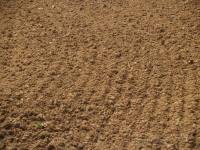
An introduction to soil management for agriculture
Simple soil treatments can turn struggling farms into profitable properties. Soil management is not always the answer, but without the study and knowledge gained through courses such as this, it's difficult to know how much of a factor your soil management actually is.
This is a general soil management course involving: introduction to soils, nutrition, soil physics, chemistry, testing, problems, land degradation, soil management in farms and crops. The eight lessons include a special project on soil management for a site of your choosing.